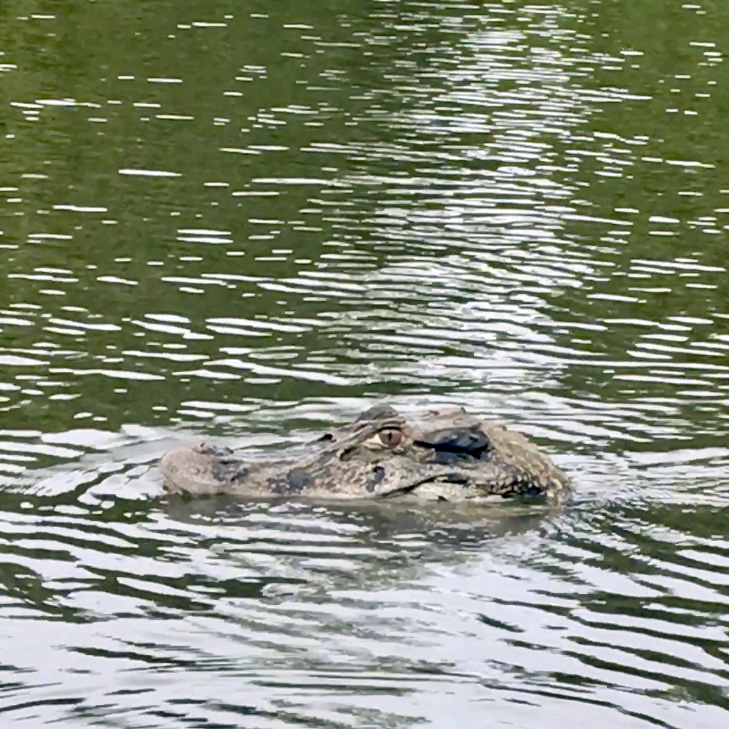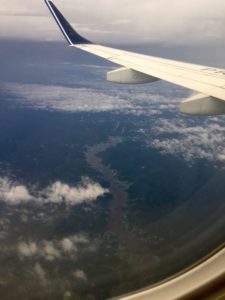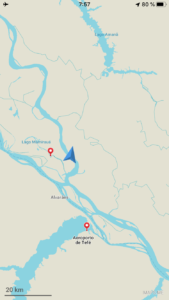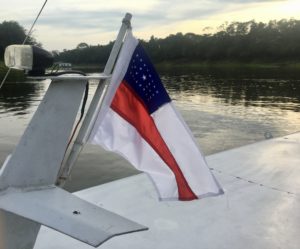
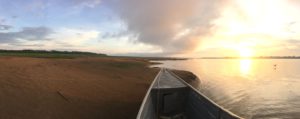
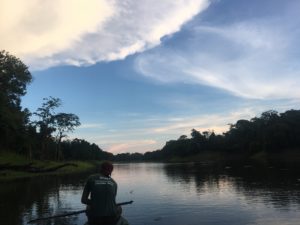
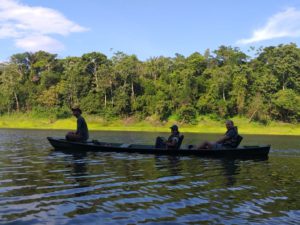
that chicken ‚kind a thingy‘ is a very noisy host, Laura didn’t trust it at all!
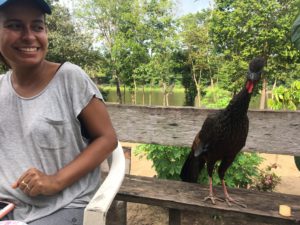
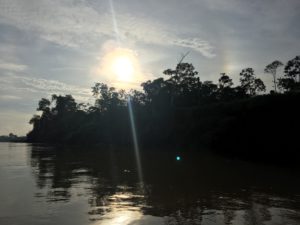
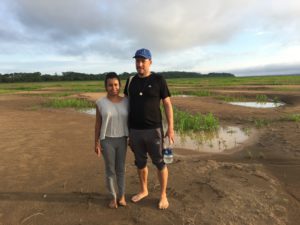
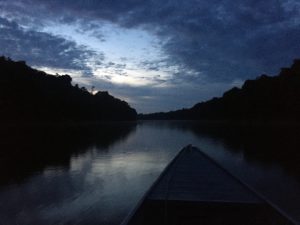
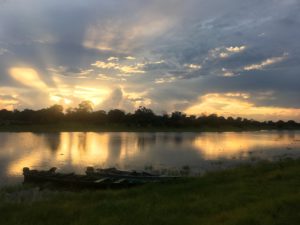
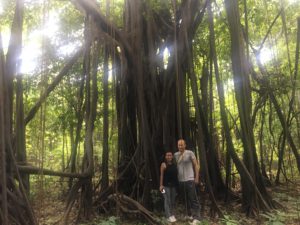
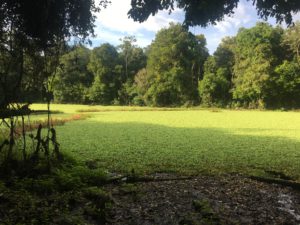
Visiting a community: here the padres helped the communities to organize themself in bigger groups, so they have a stronger voice politically.
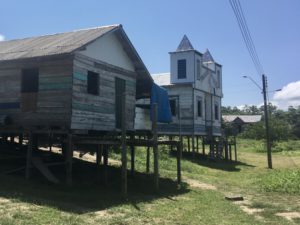
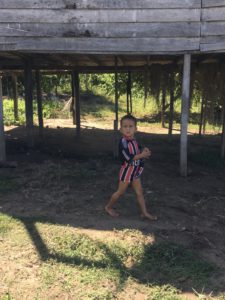
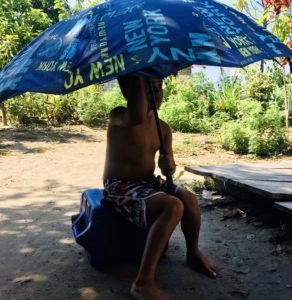
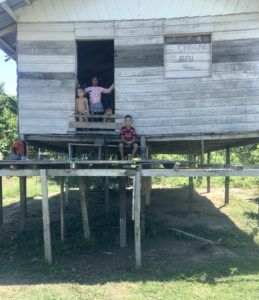
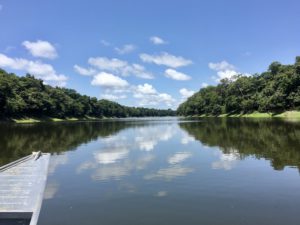
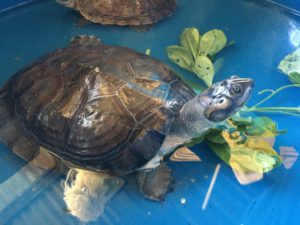
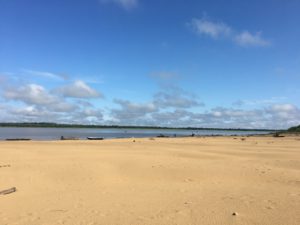
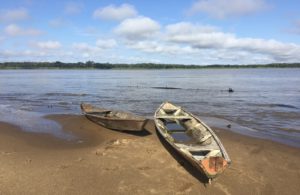
bats sharing our balcony
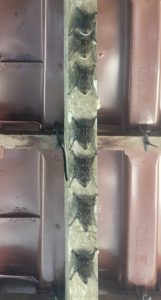
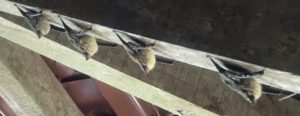
helmet protects against possible attackers from the air, due to their newborns they are very protective
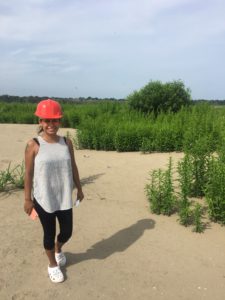
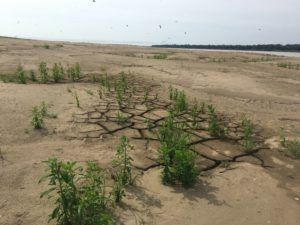
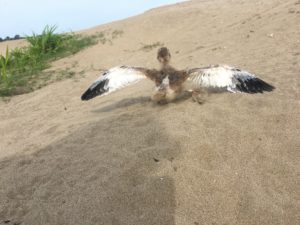
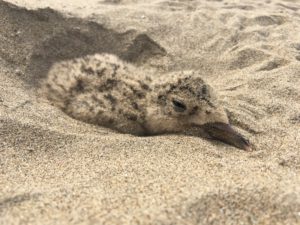
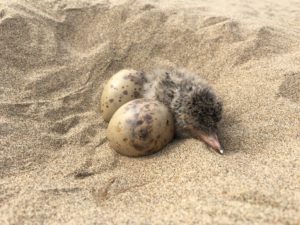
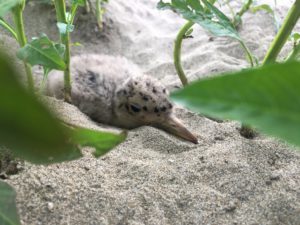
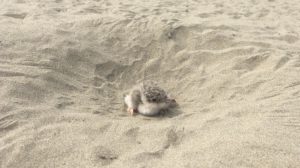
We got lucky to be here just in time for the Amazonian turtles to hatch
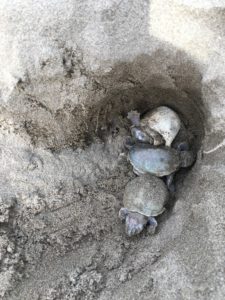
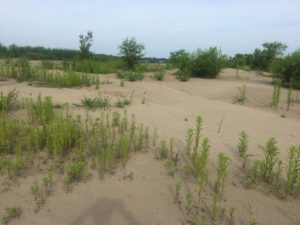
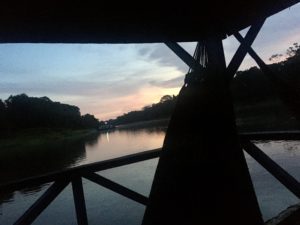
night walk in the forest – it’s a weird feeling!
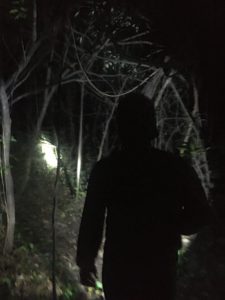
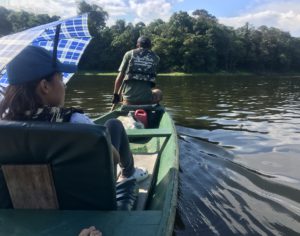
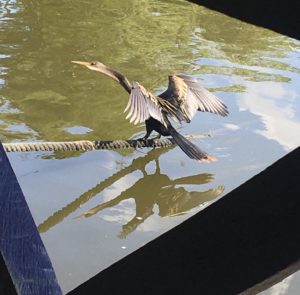
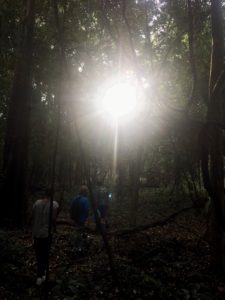
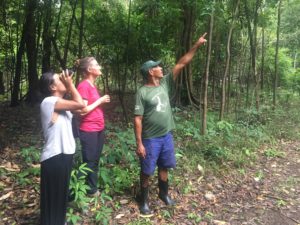
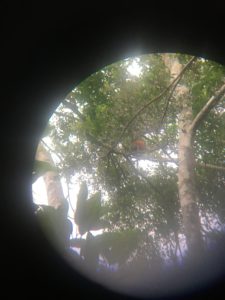
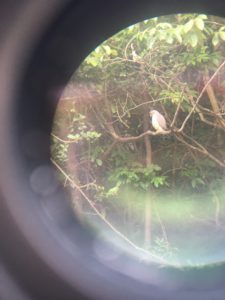
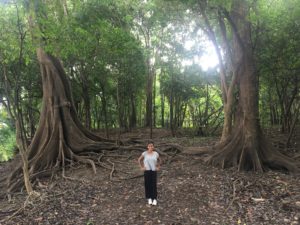
The Uacari Inn – a floating lodge – what a unique construction in a unique place!
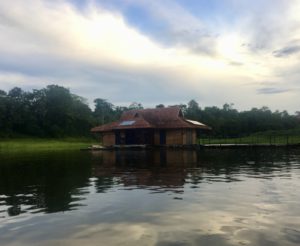
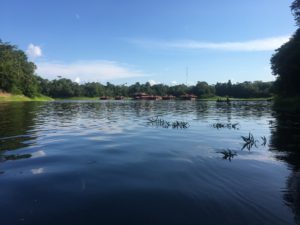
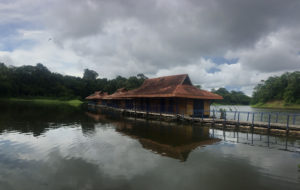
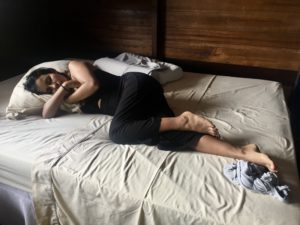
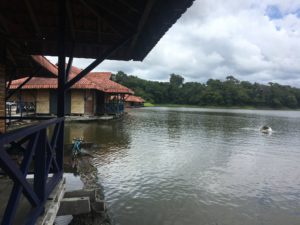
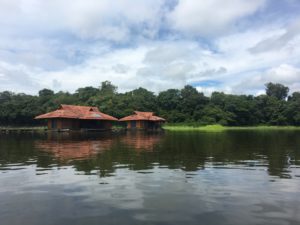
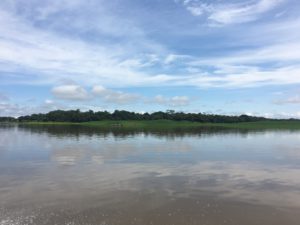
Piranha fishing is part of the program, Laura only had other fishes on the hook, and I only got lucky one – poor bastard lost one of his eyes due the hook and then got released again. I’m not a big fan of catch and release…
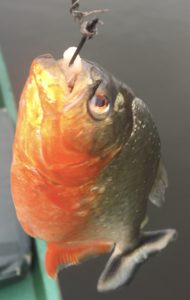
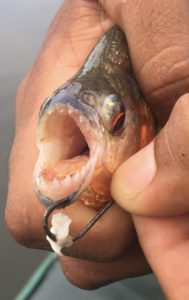
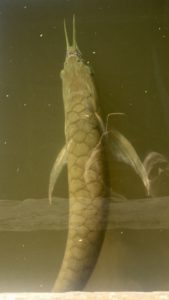
Mamirauá
From Manaus we arrived by air even further inside the Amazon. I think this here is at least geographically speaking the center of the Amazon.
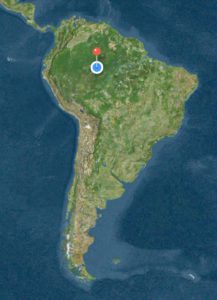
The landing hurt my brain and eyes – again, like thin needles stinging all over my forehead. I really hope the antibiotics and antiflamatory medication will do the trick before the end of the seven days, when we have to take another three flights in one day… By now I can hear again on my left ear, but there seems to be still so much mucus stuck somewhere between my ear and nose. Pieces of some tenacious bloody slimy mix turn up throughout the day.
From the airport we took a bus and then a boat and arrived at the Uacari Inn – a floating lodge on the rio Caquetá. It’s a region of the Amazon, which gets flooded annually and the water level rises about 15 meters! About 10% of the Amazon region along the Amazon river have this conditions. In the flooded season, due to snow and ice melting in the Andes, the whole forest is under water and all the trails which we can walk right now disappear. It is really hard to imagine. That’s why floating buildings make a lot of sense here. Also due to this flooding effect there is a very specific biodiversity. All animals who can not climb trees, can not survive in this area. Only the adaptable once will survive. For example the Jaguar who will stay up in the trees for the three to four flooded months will change his diet from mainly cayman to mainly monkeys and sloth’s!
There are the pink river dolphins, the Botos, which are also to blame whenever there is a pregnant women and the father is unknown. With an evolution of over 15 million years they are definitely as dinosaurs as the cayman and the manatees. Don’t even put your hand or feet close to the water: There are piranocus, piranhas and water anacondas to only name a few of the threats. It’s confusing arriving here in this eco lodge with the nice comfortable beds, the fans, the hot water showers and the incredible good and diverse food while floating peacefully on the river (the whole lodge is only fixated by a few ropes which are connected to the land): It is a very comfortable living in this otherwise very hostile environment.
The Mamirauá sustainable development reserve is a construct founded in the 80ties and allows having a natural reserve, wherein people still are allowed to live and conserve the environment. The eco lodge is almost 100% run by the people who live in the surrounding communities. There is only the general manager and a guest manager who is not from the region and the plan is also replacing them by the end of 2022 so that everything is run by the locals from the region, which strikes me as very impressive. The whole maintenance, the guides, the cooks, the cleaning is all run by the people from the surrounding communities. About 80 people work here part time, up to 10 days maximum a month per person, for a salary of 70 reals daily. All the money which the guest bring in get redistributed to the communities that way. Some of the money also gets used for different project like the Amazonian turtle rehabilitation and so on. There is a maximum of 1000 guests allowed a year to keep it eco friendly. The walks are mainly done in little groups of no more than four people to not disturb the animals too much. Now that is eco tourism! Not only a term used for marketing, but more like a thought through concept. A researcher came here in the eighties to study the redheaded Uacari monkey, and while doing so, he was seeing that the communities suffered from outsiders coming here and overfishing and over-logging the region. He achieved an agreement with the government to set up the Mamirauá reserve and put a stop to the plundering and a recovery to the abundant wildlife one can experience here today. It’s a subtle experience, not as much show as let’s say the Galapagos. For example the night walk in the jungle yesterday: We didn’t see one animal, but it was still a nice experience with the sounds of the forest at night and to see how different the forest looks and feels at nights, only with the beam from the flashlight.
It’s a nice little group of tourists staying here at the lodge. About ten including us, half of them Brazilians. They are good people, I really like Brazilians a lot. They are very friendly and direct! It was a very good decision coming here to the heart of the Amazon! The energy of this place is hard to put in words. The only unnecessary thing here are the fisherman, who are here to make some trophy photos and consist mainly of some rude and loud Americans (from the states). At least we don’t have them as room neighbors, we only share the dining area with them, so there is really no need to complain. Nonetheless the same question always pops up again together with the sighting of Americans: Why are they so horrible human beings?!
Tonight we gonna sleep in the jungle in hammocks to be even closer within the forrest and the sounds of the jungle. Let’s hope our guide is not snoring too much! Also how comfortable is that night going to be? Will it be worth it giving up the comfort of the bed? Well it is included in the seven night package, so let’s find out. So far every event was really cool…
